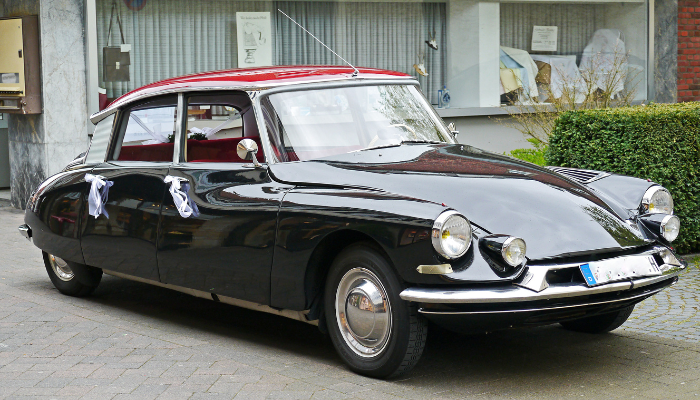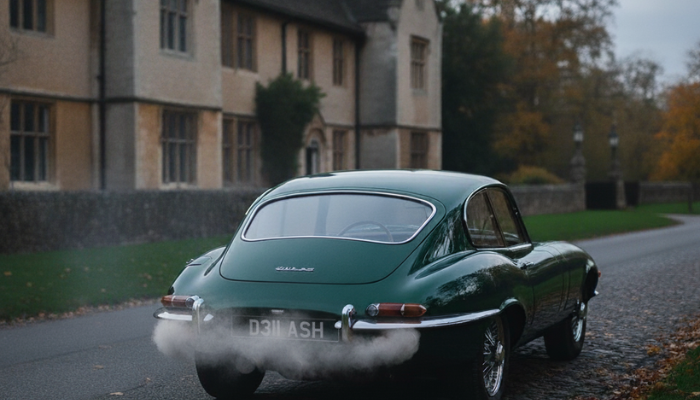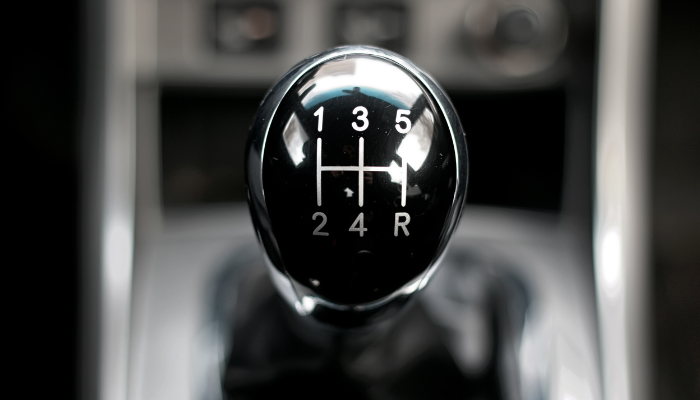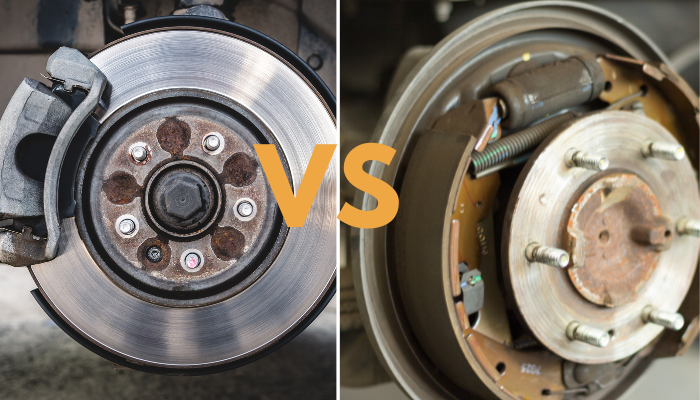There’s something undeniably special about classic cars. Whether it’s the sweeping curves, the elegant chrome details, or the sheer presence they have on the road, classic car designs capture the spirit of a different time — and they do it with style. While performance and engineering have evolved over the years, design is what turns a car into a cultural icon. That’s where the most iconic classic car designs come into their own. They’re not just functional — they’re automotive works of art.
In this blog, we’re celebrating some of the most iconic classic car designs that have stood the test of time. These are the cars that changed the way we think about automotive style, that pushed boundaries, and that still make heads turn today — whether they’re parked up at a show or cruising through the countryside. From British elegance to Italian flair and German precision, every model on this list has earned its place through a unique blend of innovation, desirability, and timeless good looks.
So whether you’re a lifelong enthusiast or just someone who appreciates beautiful design, let’s take a closer look at some of the all-time greats.
Jaguar E-Type (1961–1974)

Few cars have managed to make such an instant and lasting impression as the Jaguar E-Type. When it was first unveiled at the 1961 Geneva Motor Show, it caused an absolute stir — journalists scrambled for test drives, and Enzo Ferrari himself famously called it “the most beautiful car ever made.” High praise indeed from a man who knew a thing or two about stylish motors. making the E-Type one of the most defining cars of the 60s.
The E-Type’s design was heavily influenced by Jaguar’s D-Type race car, but with softer lines and more curves. Its long, sweeping bonnet, low-slung body, and short rear end gave it the perfect sports car proportions. The covered headlamps, oval grille, and wire-spoke wheels all added to its charm — it looked fast even when it was standing still.
But it wasn’t just about looks. The E-Type also delivered the goods under the skin, with independent suspension, disc brakes all round, and a top speed of 150mph — all at a price that made it far more accessible than many of its Italian rivals.
Today, the Jaguar E-Type is consistently ranked among the most iconic classic car designs, and it’s easy to see why. It’s the kind of car that defines an era and still leaves people speechless more than 60 years on.
Mercedes-Benz 300 SL Gullwing (1954–1957)

Image By M 93
If there’s one car that combines elegance, innovation, and pure 1950s cool, it’s the Mercedes-Benz 300 SL Gullwing. Launched in 1954 and inspired by Mercedes’ racing pedigree, this car wasn’t just a head-turner — it was a technological marvel. With its trademark upward-opening doors and streamlined body, it looked like something straight out of a science fiction film. And at the time, it pretty much was.
The Gullwing’s most recognisable feature — those famous doors — wasn’t just a style statement. They were actually a practical solution. The 300 SL’s cutting-edge tubular spaceframe chassis sat so high along the sills that traditional doors simply wouldn’t fit. So Mercedes engineers got creative — and accidentally gave birth to one of the most iconic classic car designs of all time.
Under the bonnet, it was just as clever. The 3.0-litre straight-six engine was the first to feature direct fuel injection in a production car, helping the SL reach top speeds of around 160mph — mind-blowing stuff for the 1950s.
The Gullwing didn’t just set new standards for performance; it redefined what a sports car could look like. With just over 1,400 coupes produced, it remains one of the most collectible classics on the planet — a rare gem that still dazzles on any concours lawn or collectors’ garage.
Ferrari 250 GTO (1962–1964)

By Mr.choppers
If there’s one name that gets classic car enthusiasts misty-eyed, it’s the Ferrari 250 GTO. This isn’t just a car — it’s a rolling piece of motoring royalty. Built between 1962 and 1964, the 250 GTO is arguably the crown jewel of Ferrari’s golden era and, for many, the absolute pinnacle of iconic classic car designs.
Visually, it’s pure Italian drama. The elongated bonnet, swooping curves, and muscular rear haunches were all hand-shaped by master craftsmen. Unlike many of its contemporaries, the 250 GTO wasn’t penned on a computer or drawn up by committee — it was sculpted with a racer’s eye and an artist’s hand. The design wasn’t just for show either. Every vent, curve, and crease had a purpose: to slice through the air and keep the car glued to the tarmac at high speed.
Under that beautiful bonnet lived a 3.0-litre V12, producing around 300bhp — more than enough to make it a monster on the track. And that’s exactly where it excelled, dominating GT racing in the early ‘60s and earning Ferrari another round of silverware for their trophy cabinet.
Only 36 were ever made, which makes them jaw-droppingly rare and absurdly valuable. In fact, the 250 GTO holds the record for the most expensive car ever sold at auction — a true testament to its desirability and legendary status.
This isn’t just one of the most iconic classic car designs — it’s quite possibly the most coveted car in the world. A blend of beauty, brawn and exclusivity that’s yet to be matched.
Porsche 911 (1964–Present)

When it comes to longevity, legacy, and instantly recognisable styling, the Porsche 911 is in a league of its own. First hitting the roads in 1964, the 911 has managed to evolve continuously over six decades while still staying unmistakably true to its roots — a true benchmark of iconic car design.
The original 911 was sleek, compact, and beautifully engineered, with a silhouette that’s become one of the most enduring in automotive history. Its gently sloping roofline, round headlamps, and rear-engine layout made it stand out immediately — not to mention giving it some very unique handling characteristics. Yes, early 911s could be a bit lively at the limit, but that only added to their charm.
What makes the 911 so special is its refusal to conform. While other manufacturers were shifting engines to the front and redesigning from scratch, Porsche stuck with its unusual layout — refining, tweaking, and perfecting rather than starting over. This loyalty to the original concept has made the 911 not only iconic but beloved by enthusiasts around the globe.
Classic 911s from the ‘60s and ‘70s are now highly collectible, but the appeal isn’t just about rarity or nostalgia. The driving experience — raw, mechanical, and utterly involving — is still hard to beat. Whether you’re carving through B-roads or pottering through town, the 911 makes even the mundane feel special.
From the air-cooled purists to the modern turbocharged monsters, the 911 remains a testament to timeless design. It’s more than just a car — it’s a philosophy, and a reminder that when it comes to iconic classic car designs, evolution can be just as powerful as revolution.
Lamborghini Miura (1966–1973)

By Chelsea Jay
If there was ever a car that made people stop and stare, it was the Lamborghini Miura. Launched in 1966, the Miura didn’t just push boundaries — it blew right past them. At a time when most high-performance cars were front-engined GTs, Lamborghini flipped the rulebook and stuck a V12 smack in the middle of the chassis. The result? A car that not only went like stink but looked like a work of modern art. No wonder it’s regularly cited as one of the most iconic classic car designs of all time.
Penned by a very young Marcello Gandini at Bertone, the Miura’s design was pure theatre — from the impossibly low stance to the flowing lines and those signature “eyelash” headlight surrounds. The body was so curvaceous it made everything else on the road look square. And those rear buttresses and mid-engine proportions? A blueprint for the supercar as we know it today.
Underneath all that beauty sat a 3.9-litre V12 engine mounted transversely just behind the driver. It was noisy, fast, and occasionally a bit terrifying — but that’s all part of the charm. The Miura could hit over 170mph, which was outrageous in the late ‘60s.
But beyond the numbers and the noise, it’s the presence of the Miura that really defines it. It didn’t just turn heads — it caused whiplash. Even today, it still looks like it belongs on a red carpet rather than a road.
Without the Miura, the modern supercar simply wouldn’t exist in the same way. It didn’t just influence car design — it redefined it. And that’s why it remains a shining star in the world of iconic classic car designs.
Ford GT40 (1964–1969)

By Mr.choppers
The Ford GT40 isn’t just a classic — it’s the stuff of motorsport legend. Built with one mission in mind — to beat Ferrari at Le Mans — the GT40 was a bold, brash, and brilliant piece of engineering that did exactly what it set out to do. Its low-slung, aerodynamic body and purposeful stance have cemented it as one of the most aggressive and purposeful shapes in motoring history, and without question, one of the most iconic classic cars ever designed.
The name GT40 comes from the car’s roof height — just 40 inches from the ground — which made it look like it was barely skimming the tarmac. But this was no show pony. Beneath that striking bodywork was a mid-mounted V8 engine that delivered serious performance and a thunderous soundtrack to match.
Its design wasn’t just about looking good — it was built for endurance. The wide stance, integrated rear spoiler, and vented bodywork were all geared towards high-speed stability and cooling. And it worked. The GT40 won the 24 Hours of Le Mans four years in a row from 1966 to 1969, finally toppling Ferrari’s long-standing dominance in spectacular fashion.
Beyond its racing pedigree, the GT40’s styling has inspired countless replicas and modern interpretations, including the hugely popular Ford GT supercars of the 2000s and 2010s. Its blend of American muscle and European finesse created a unique identity that still resonates with enthusiasts today.
The GT40 didn’t just look fast — it was fast, with the racing credentials to back it up. It stands as a testament to what can happen when passion, pride, and a touch of spite come together in a design that’s as functional as it is fierce. This list wouldn’t be complete without it.
Citroën DS (1955–1975)

Let’s be honest — there’s nothing else quite like the Citroën DS. When it was first revealed at the 1955 Paris Motor Show, jaws hit the floor. In a sea of boxy saloons and stodgy family cars, the DS looked like something from outer space. With its low, sweeping lines, aerodynamic silhouette and sharply tapered rear end, it immediately rewrote the rulebook on car design. And more than half a century later, it still stands tall as one of the most iconic classic car designs the world has ever seen.
But it wasn’t just the looks that made the DS stand out. This was a car stuffed with futuristic technology — most notably, its hydropneumatic suspension system. Instead of traditional springs and dampers, the DS used a self-levelling, pressurised setup that delivered a ride so smooth it was said to glide over potholes. You could raise and lower the car at the push of a button — impressive now, never mind in the 1950s.
Other innovations included power steering, disc brakes (a world first for a production car), and swivelling headlights that turned with the steering — genius for navigating twisty country roads at night.
The DS quickly earned a reputation for comfort, elegance and technical brilliance. It became the car of choice for French presidents and intellectuals alike — a symbol of innovation and forward-thinking design. Yet despite its eccentricities, it remains a deeply lovable machine that still turns heads.
It’s fair to say that the Citroën DS didn’t just raise the bar — it launched it into the stratosphere. A true game-changer, and an undisputed contender in any conversation about iconic classic car designs.
Aston Martin DB5 (1963–1965)

If ever a car was made to wear a tuxedo, it’s the Aston Martin DB5. Elegant, understated and dripping with British charm, the DB5 is more than just a beautiful car — it’s a cultural icon. With its smooth aluminium curves, wire wheels, and that iconic grille, it’s been turning heads since 1963. And thanks to a certain secret agent, it’s cemented its place in history as one of the most iconic car designs of all time.
The DB5’s styling was the work of Italian coachbuilder Carrozzeria Touring of Milan, giving it a perfect blend of British refinement and Italian flair. It had that long bonnet/short boot layout that defined grand tourers of the era, and the proportions are still spot-on today. Open the door, and you’re met with Connolly leather, walnut trim, and a dash layout that’s as classy as it is functional.
Under the bonnet sat a 4.0-litre straight-six engine producing 282bhp — enough to push this gentleman’s express to over 140mph. Paired with an optional five-speed ZF gearbox and disc brakes all round, it had the go to match the show.
But of course, the DB5’s real claim to fame is its starring role in the 1964 Bond film Goldfinger. With machine guns, an ejector seat, and revolving number plates, it was the ultimate fantasy car — and it hasn’t looked back since. Even now, it’s impossible to see a DB5 without humming the Bond theme in your head.
Beyond the silver screen, though, the DB5 stands on its own merits. It’s beautifully engineered, gorgeously proportioned, and oozes old-school glamour. It’s no wonder it’s consistently hailed as one of the most beautiful cars— because, quite simply, it is.
Volkswagen Beetle (1938–2003)

If there’s a car that truly belongs to the people, it’s the Volkswagen Beetle. With its unmistakable rounded shape, bubbly personality and sheer global popularity, the Beetle isn’t just one of the most recognisable vehicles of all time — it’s also one of the most enduring. Produced in various forms from 1938 right through to 2003, it became a symbol of reliability, simplicity, and affordability. And of course, it easily earns its spot here.
The design itself, originally drafted by Ferdinand Porsche, was intended to be practical and functional rather than flashy. But somewhere along the line, its charm took hold. That curved roofline, the bulging wings, the circular headlamps and the rear-mounted, air-cooled engine all combined to create something that just felt right. There’s a friendliness to the Beetle that few other cars can match.
But don’t let the cheerful appearance fool you — the Beetle was brilliantly engineered for its time. It was easy to maintain, tough as old boots, and capable of chugging along for decades with minimal fuss. It became a hit across continents, especially in post-war Europe and later in the United States, where it became a counterculture icon in the 1960s.
From humble beginnings as a people’s car in pre-war Germany to flower-powered freedom machine in California, the Beetle has worn many hats. It’s been a family runabout, a rally car, a dune buggy, and even a Disney film star. Yet through all of that, it has remained instantly recognisable — proof that great design doesn’t need to be complicated.
It may not be the fastest or flashiest car on this list, but when it comes to affection and impact, the Beetle more than earns its place among the most iconic classic car designs ever created.
Chevrolet Corvette Sting Ray (1963–1967)

If the Jaguar E-Type is Britain’s pin-up, then the Chevrolet Corvette Sting Ray is America’s rock star. When the second-generation Corvette (C2) landed in 1963, it wasn’t just a new model — it was a statement. Sharp-edged, aggressive, and dripping with attitude, it marked a total shift in Corvette design and instantly became one of the most iconic car designs to ever come out of the United States.
The 1963 Sting Ray Coupe was the first Corvette to feature a closed-roof design — and what a roof it was. That split rear window? Instantly controversial, wildly stylish, and now one of the most sought-after features in the collector world. It only lasted for one year (due to visibility complaints), but it helped cement the ’63 as the standout model in the range.
Visually, the Sting Ray was all about muscle. Hidden pop-up headlights, bulging arches, razor-sharp lines, and a low-slung profile gave it the look of a proper performance machine — and it had the power to back it up. Under the fibreglass body (another Corvette signature) sat a range of V8s that offered anything from relaxed cruising to tyre-smoking madness.
But what really made the Sting Ray special was that it brought proper sports car dynamics to a broader American audience. With independent rear suspension and tighter handling, it was more than just a straight-line cruiser — it could actually take a corner, and take it well.
Today, the C2 Sting Ray is celebrated not just for its performance, but for its bold styling and impact. It captured the spirit of 1960s America — confident, daring, and loud in all the right ways.
Why These Are the Most Iconic Classic Car Designs of All Time
From elegant British grand tourers to rebellious American muscle and quirky European masterpieces, these cars each left a mark far beyond the roads they travelled. What unites them all isn’t just beauty — it’s influence. These machines helped define eras, set design standards, and showed the world what cars could be when form and function worked in perfect harmony.
Whether it’s the futuristic lines of the Citroën DS, the race-bred curves of the Jaguar E-Type, or the brute force wrapped in fibreglass that is the Corvette Sting Ray, each one represents a different philosophy — but all share the same legacy. They’re more than just vehicles; they’re rolling works of art and cultural icons.
And that’s what makes them the most iconic classic car designs of all time. They don’t just look good — they tell a story, stir emotion, and remind us why we fell in love with cars in the first place.







Leave A Comment